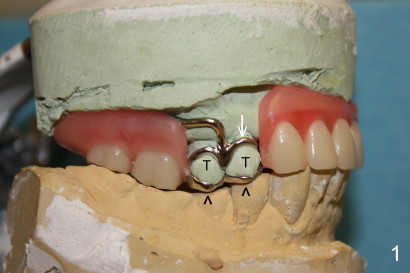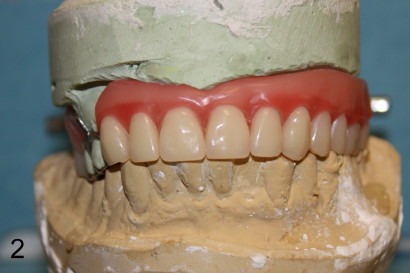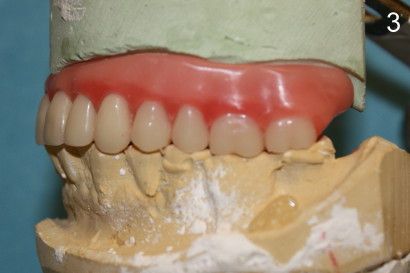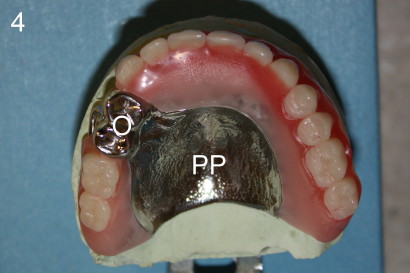



 |
 |
 |
 |
Overdenture
Mrs. Teng is eighty years old. Two of upper teeth remain (T in Fig.1: right side view). They are quite worn out (short). The nerve is almost exposed. But she wants to keep these two teeth as long as possible.
We make an overdenture by adding metal on the bite surface of these two teeth (black arrowheads in Fig.1). In this way, Mrs. Teng can chew more efficiently and look younger. Long teeth are characteristic of being young. More importantly, these two teeth are better protected. The other metal component (white arrow in Fig.1) is called clasp to hold the denture in place.
Fig.2 and 3 show the front and left views of the overdenture.
Fig.4 is occlusal view of the overdenture. O stands for the metal covering the natural teeth, whereas PP is a metal plate covering the palate. Metal plate makes that portion of the denture thin. This is important, because metal conducts heat better. Mrs. Teng will enjoys food better than denture with thick plastic plate.
Xin Wei, DDS, PhD, MS 1st edition 06/09/2011, last revision 09/28/2012